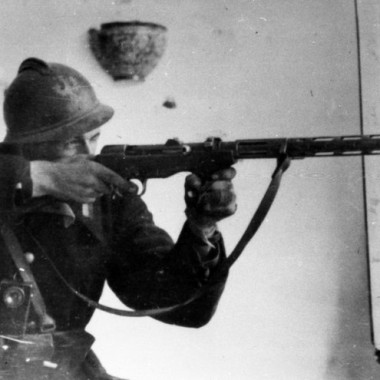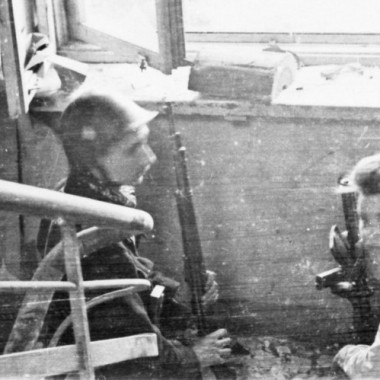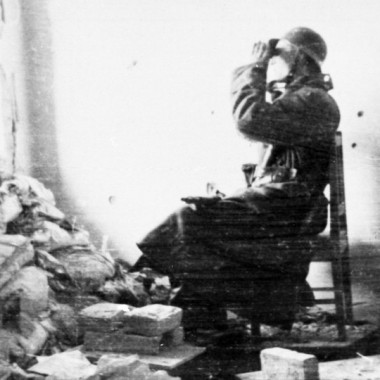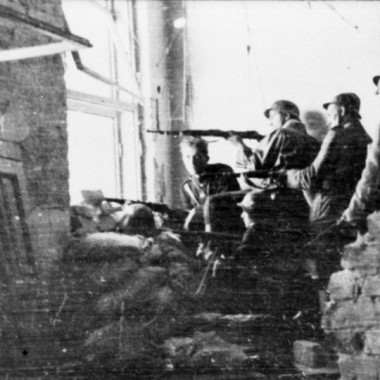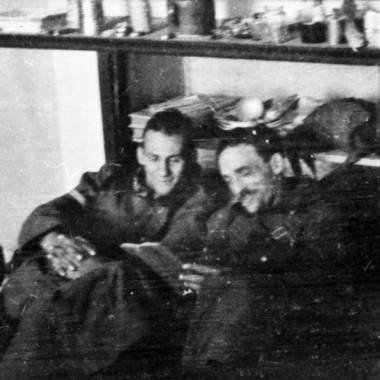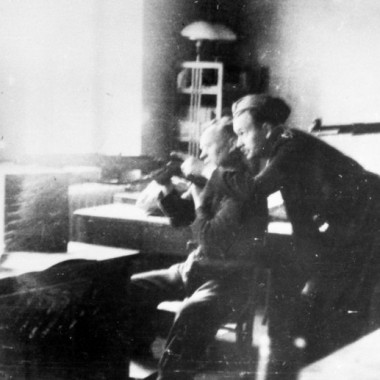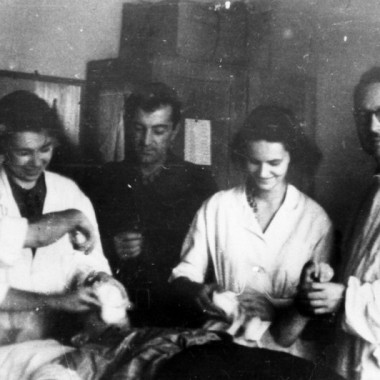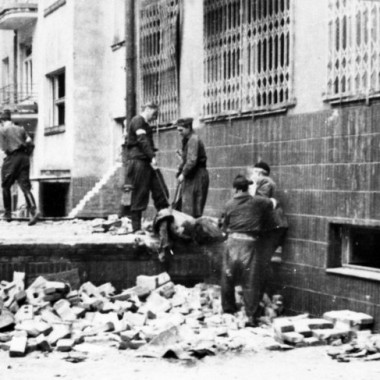Officer Cadet Corporal Henryk Świercz ”Świerszcz” (Cricket) was born on 2 January 1923 in Bydgoszcz. A middle school pupil in 1939, he and his family fled to Warsaw as a result of the German reprisals against Polish residents Bydgoszcz during the occupation. He passed his final secondary education exam at underground courses. Beginning on 15 February 1941, he actively served in the underground National Military Organisation (NOW), and completed the underground infantry officer cadet course with the National Armed Forces (NSZ). During the Rising, he served with the National Armed Forces’ Władysław Sikorski Regiment (aka ”Sikora”) –in the Theatre Square area before 4 August, and later around Czackiego Street. Effective 9 August, he was assigned to the ”Sikora” assault squad (later reformed as a platoon). The actions he took part in included the capture of the Polish Telephone Joint-stock Company building (known as PAST), and the Holy Cross Church. In September, his platoon was tasked to exfiltrate from Warsaw. Faced with the impossibility of the mission, the unit joined with the 2nd Company (commanded by “Ziuk”) of the ”Miłosz” Battalion in City Centre South. After the capitulation, his whole unit volunteered to join A Company, which had been officially tasked with the supervision and protection of soldiers and civilians evacuating Warsaw. Secretely, A Company was instructed to to document the damage sustained by the city. He was interned in Stalag IV B in Mühlberg. After the war, he lived in Łódź, Szczecin and Koszalin. He died on 23 December 1992 in Koszalin.
Henryk Świercz is another insurgent of the National Armed Forces (NSZ), apart from Jerzy Kokczyński, to have made a collection of images of the Rising. Taken in September 1944 following the amalgamation of the ”Sikora” Assault Platoon with the Company commanded by ”Ziuk” in City Centre South, they show Iisurgents in the area of Ujazdowskie Avenue, Książęca Street and Frascati Street. Świercz’s negatives were stolen in Germany in 1945. The films were found some years later in Canada, where a soldier from Świercz’s platoon reprinted them and sent to the author.







